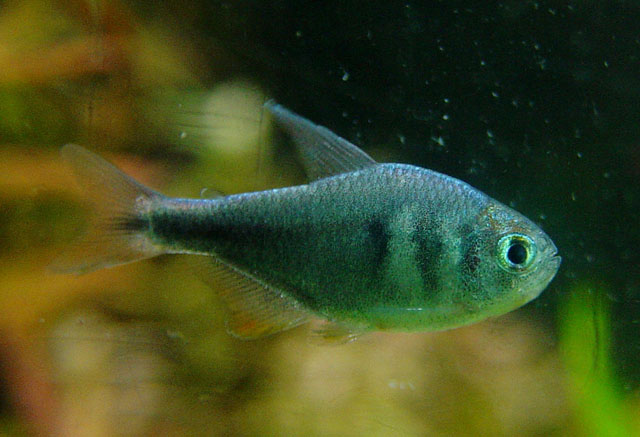|
Vertebrae: 32-33. Hyphessobrycon weitzmanorum is distinguished from all congeners, except H. tortuguerae Böhlke, H. bifasciatus Ellis, H. savagei Bussing, H. flammeus Myers, H. griemi Hoedeman, H. balbus Myers, H. itaparicensis Lima & Costa, and H. columbianus Zarske & Géry, by possessing two humeral spots. H. weitzmanorum is distinguished from H. bifasciatus, H. savagei, H. flammeus, H. tortuguerae, H. griemi, H. itaparicensis, and H. columbianus by possessing a general dark color pattern, due to a high concentration of dark chromatophores uniformly distributed over the lateral surfaces of the body (vs. a general clear color pattern, with few, scattered chromatophores over the lateral surfaces of the body). Additionally, Hyphessobrycon weitzmanorum differs from H. bifasciatus, H. griemi and H. tortuguerae by possessing two intensely pigmented, vertically-elongate humeral spots (vs. second humeral blotch fainter in H. bifasciatus; first humeral blotch fainter in H. griemi; and both humeral blotches small, not vertically-elongate in H. tortuguerae). Hyphessobrycon weitzmanorum is distinguished from H. flammeus and H. savagei by possessing wide humeral blotches, with somewhat rounded margins (vs. humeral blotches narrow, with straight margins). Hyphessobrycon weitzmanorum is distinguished from H. balbus in possessing 5 -9 perforated lateral line scales (vs. 11 - 22) and in having the second humeral blotch intensely pigmented (vs. very faint). Hyphessobrycon weitzmanorum is distinguished from H. itaparicensis Lima & Costa (2001), by possessing a lower number of branched anal-fin rays (17 - 21, vs. 22 - 25) and lack of a midlateral, horizontal stripe, crimson in life, that extends from the vertical just posterior of the dorsal-fin origin to the caudal peduncle. Hyphessobrycon weitzmanorum is distinguished from H. columbianus Zarske & Géry (2002), by possessing a lower number of branched anal-fin rays (17 - 21, vs. 23 - 24) and orange pigmentation in life on the caudal, anal, dorsal and pelvic fins (vs. red pigmentation on caudal, and anal) (Ref. 52338). |
